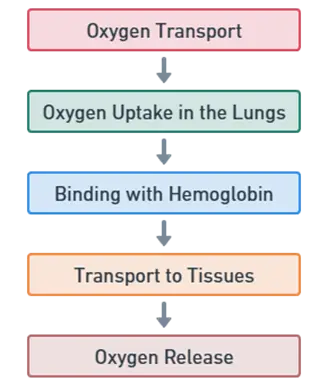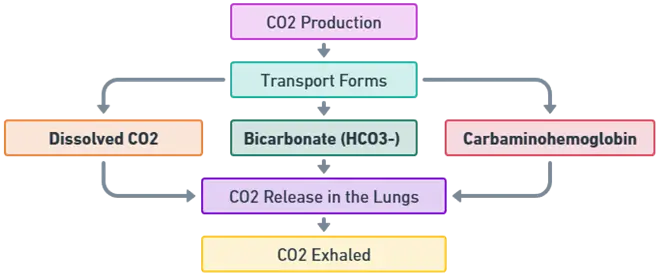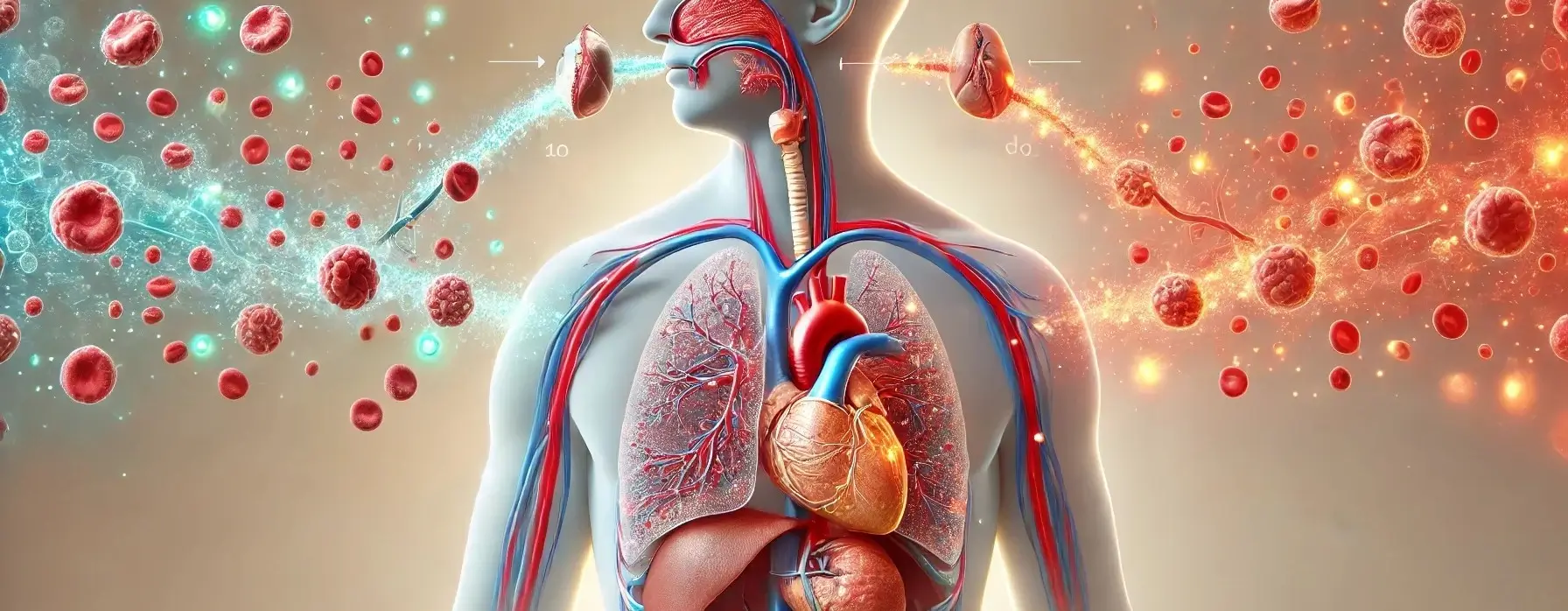- The transport of respiratory gases, specifically oxygen (O2) and carbon dioxide (CO2), between the lungs and the tissues of the body is a crucial physiological process.
- Transport of respiratory gases is essential for cellular respiration, which is the process by which cells produce energy.
Oxygen Transport
-
Oxygen Uptake in the Lungs
- Oxygen is inhaled into the lungs and diffuses across the alveolar-capillary membrane into the blood.
-
Binding with Hemoglobin
- Oxygen binds to hemoglobin in red blood cells.
- Each hemoglobin molecule can carry up to four oxygen molecules, forming oxyhemoglobin.
-
Transport to Tissues
- Oxygenated blood circulates through arteries and arterioles to the capillaries, delivering oxygen to the tissues.
-
Oxygen Release
- The release of oxygen from hemoglobin is influenced by factors such as:
- Oxygen and carbon dioxide concentrations in the blood.
- Blood pH and temperature.
- Presence of 2,3-bisphosphoglycerate (2,3-BPG), a molecule that reduces hemoglobin’s affinity for oxygen, facilitating oxygen release to tissues.
- The release of oxygen from hemoglobin is influenced by factors such as:

Carbon Dioxide Transport

-
CO2 Production
- Carbon dioxide is produced as a waste product of cellular respiration and must be removed to maintain homeostasis.
-
Transport Forms
- CO2 is transported in the blood from tissues to the lungs in three main forms:
- Dissolved CO2: A small amount is transported dissolved in plasma.
- Bicarbonate (HCO3-): Most CO2 is converted to bicarbonate ions. CO2 reacts with water in the presence of carbonic anhydrase, forming carbonic acid, which dissociates into bicarbonate and hydrogen ions.
- Carbaminohemoglobin: CO2 binds directly to hemoglobin at a different site than oxygen, forming carbaminohemoglobin.
- CO2 is transported in the blood from tissues to the lungs in three main forms:
-
CO2 Release in the Lungs
- In the lungs, the processes that converted CO2 into bicarbonate and carbaminohemoglobin are reversed.
- CO2 is released from hemoglobin, bicarbonate is converted back to CO2, and CO2 is exhaled.
- Carbon dioxide is produced as a waste product of cellular respiration and must be removed from the body to maintain homeostasis.
Regulation of Gas Transport
- The transport and release of O2 and CO2 are finely regulated to meet the body’s metabolic demands.
- Regulation involves changes in:
- Blood flow
- Hemoglobin’s affinity for oxygen
- The rate and depth of breathing
- These processes are controlled by neural and chemical mechanisms that adapt to changing conditions such as physical activity or oxygen availability.

